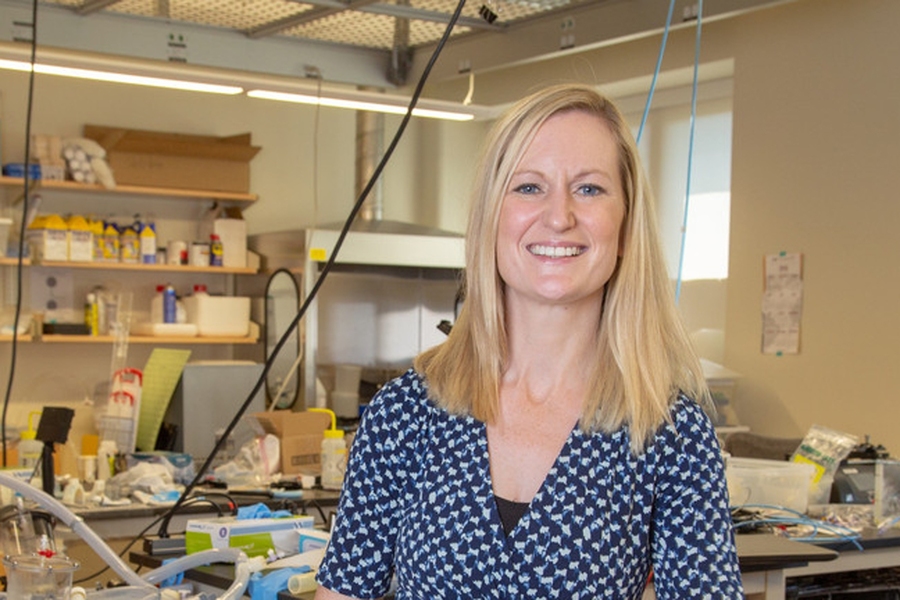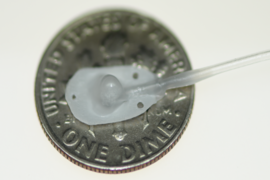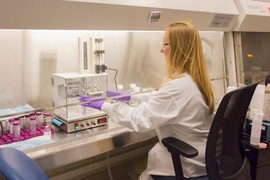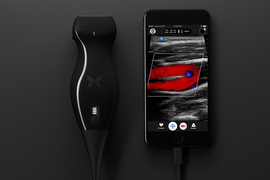Ellen Roche is used to bridging two worlds. Originally from Galway, she has spent the past 14 years moving back and forth between the United States and her native Ireland. She has also spent time in both industry and academia. As an assistant professor at MIT, she holds a joint appointment in the Department of Mechanical Engineering and the Institute for Medical Engineering and Science. Then there is Roche's work, which lies at the intersection of biomedicine and mechanical engineering.
This duality has shaped the trajectory of her career ever since graduating high school. In Ireland, students choose their major before applying to university. “When you’re that young and choosing what you’re going to do for the rest of your life, it’s not easy,” she recalls. “I was torn between studying engineering and medicine.”
She was able to have the best of both worlds, enrolling in a newly designed biomedical engineering program at National University of Ireland, in Galway. Throughout her undergraduate degree, Roche was enrolled in all of the same classes as mechanical engineering majors, with additional biomedical courses.
Designing medical devices
After graduating, she made use of Galway’s booming medical device industry. She enrolled in a graduate export orientation program at Mednova Ltd, and after spending six months at Mednova’s office in Galway, she was transferred to their sister company Abbott Vascular in Redwood City, California, as part of the program.
“I was supposed to be abroad in California for just six months, but I ended up staying for three and a half years,” she says.
While working for Mednova and Abbott, Roche utilized the twin pillars of her academic background to work on a filter that can be inserted into a carotid artery to prevent stroke after a stent is implanted. She then explored coating the scaffolds that make up these stents with drugs that prevent arteries in the heart from closing again.
Then Roche felt a pull back toward academia. So she moved home to Ireland where she worked on her master’s part-time at Trinity College in Dublin. “Going to get my master’s in bioengineering proved to me that I really was interested in getting back into research,” she says.
While her research at Trinity focused on orthopedic devices, she continued to work on heart-related devices full-time at Medtronic. She worked on the development of a replacement aortic valve which was used in humans during her time at the company.
“Getting to see something through from development to clinical application for the first time was a great experience,” she recalls.
After studying as a medical student at Royal College of Surgeons in Ireland, Roche was given a Fulbright Scholarship to pursue her PhD. Once more she prepared herself for a transatlantic move.
A serendipitous Irish connection
On Saint Patrick’s Day weekend after being named a Fulbright Scholar, Roche visited Harvard University, where she met David Mooney, a professor of bioengineering. Mooney’s primary focus is on tissue engineering. The two clicked and Roche decided to pursue her PhD at Harvard’s John A. Paulson School of Engineering and Applied Sciences.
After enrolling, Roche joined an online Irish network to stay connected to her roots.
“When I emailed an online group of MIT and Harvard students from Ireland, Conor Walsh serendipitously saw my message,” she says. Walsh, now a full professor of engineering and applied sciences at Harvard, focuses on bioinspired robots and founded the Harvard Biodesign Lab. After seeing Roche’s message in the Irish students’ group, he invited her to discuss research, which led to her doing a rotation in his new lab. He ended up co-advising Roche’s PhD studies along with Mooney.
“It was such a nice situation — I was working with one junior faculty who focused on robotics and one senior faculty who worked in tissue engineering,” she says. “Those are two very different fields, but the three of us collaborated really well together.”
In one such collaboration, Roche, Walsh, and Mooney developed a soft robotic sleeve that mechanically assists the heart in pumping. “The idea was to mechanically assist and augment the heart using a biomimetic approach rather than taking over its function,” she explains. They also developed a device named “Therepi” that attaches directly to a damaged heart, delivering medicine to the exact area where it is most needed.
An interdisciplinary approach
At the encouragement of both Walsh and Mooney, Roche applied to the joint faculty position in mechanical engineering and medical engineering at MIT after completing her PhD. She deferred her arrival on the faculty to complete a postdoc in Galway, focusing on computational methods while also continuing her medical studies.
“That time in Galway was really helpful, since it gave me time to think about what I want to focus on and accomplish here at MIT,” she adds.
Since starting at MIT in 2017, Roche has founded the Therapeutic Technology Design and Development research group. Her team uses an interdisciplinary approach to the mechanical design of medical devices. “We use all the cutting-edge technologies at our disposal — from 3-D printing to soft robotics and novel manufacturing methods,” she explains.
Roche’s main focus now is the effect mechanical reinforcement or active mechanical assistance has on how tissue heals. She has expanded her research beyond cardiac function to include respiratory illness and diabetes. Whether it’s using a soft robotic device in proximity to the diaphragm to regulate breathing or repurposing the technology behind Therepi as drug delivery for other diseases, Roche collaborates with top medical experts at nearby hospitals.
“One of the best things about working here is how close we are to some of the world’s best research hospitals,” she adds. “We have access to a seemingly endless network of doctors.” Her collaborators currently include clinicians from Brigham and Women’s Hospital, Boston Children’s Hospital, and Massachusetts General Hospital.
As medical research advances, Roche sees a major role for engineers. “A lot of the systems in the body are very mechanical,” she says. “It’s hard to fully understand them unless you have mechanical engineers working side-by-side with doctors.”












